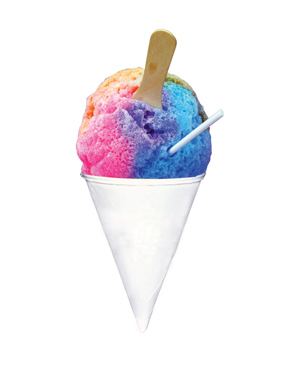Type Frozen dessert | ||
 | ||
Main ingredients Ice, syrup, condensed milk (common variant) Similar Chamoy, Slush, Mangonada, Patbingsu, Cholado | ||
Shave ice made with a lot of heart at uncle clay s house of pure aloha dining on a dime
Shave ice or Hawaiian shave ice is an ice-based dessert made by shaving a block of ice. While the product can resemble a snow cone, snow cones are made with crushed, rather than shaved, ice. Even though it is made with shaved ice, it is called "shave ice", not "shaved ice" in Hawai'i. On the Big Island of Hawai'i, it is also referred to as 'ice shave', though both terms (ice shave and shave ice) are used by locals.
Contents
- Shave ice made with a lot of heart at uncle clay s house of pure aloha dining on a dime
- Matsumoto shave ice in oahu hi
- History
- In other countries
- References
Shaving produces a very fine ice that appears snow-like. Flavored syrups are added to the ice, which are absorbed by the ice instead of surrounding it. A properly made shave ice product rarely requires a straw, since the flavors are in the ice and not at the bottom of the cup. Although the traditional American flavors are common, shave ice in Hawai'i is often flavored with local ingredients such as guava, pineapple, coconut cream, passion fruit, li hing mui, lychee, kiwi fruit and mango. Hawaiian shave ice is traditionally served in a conical paper or plastic cup with multiple flavors and with a scoop of vanilla ice cream and/or adzuki bean paste at the bottom of the cup. Sweetened condensed milk drizzled over the top is sometimes called a "snow cap." This style of shave ice is common on the north shore of O'ahu, as well as on Maui and the Big Island of Hawai'i (where it is called "Japanese style").
Matsumoto shave ice in oahu hi
History
Shave ice traces its history to Japan, where it is known as kakigōri and dates back to the Heian Period. "Shave ice enjoyed world-wide popularity after Japanese plantation workers immigrated to the Hawaiian islands and took their traditional dessert with them, creating shave ice from large blocks of ice and using Japanese swords which were family heirlooms."
In other countries
"Snow ice"—cream, milk, water, sugar and fruit, frozen and then shaved and served in cones—is popular in Korea, Taiwan and Indonesia and making inroads into the United States.
